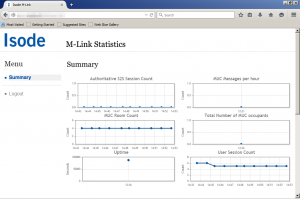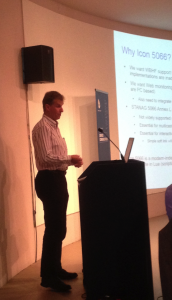We’re pleased to announce the availability of Isode’s latest release, R16.3, which can be downloaded now from our website. R16.3 is a major Isode release which adds new capabilities across the entire Isode product range, including:
M-Vault
We’ve introduced a multi-master capability to M-Vault, complementing the single-master approach to replication defined in the X.500 protocols around which M-Vault was developed. M-Vault is the first directory to offer both multi-master and X.500.
M-Link
M-Link gains a new Archive Server for archive of all messages (including 1:1 chat, MUC and PubSub). XMPP clients can access archives using Message Archive Management (MAM) as defined in XEP-0313. M-Link also gains three new web applications:
- Message Archive Management, allowing browser-based access to information in the archive.
- Statistics, a lightweight monitoring alternative to the M-Link Console GUI.
- Forms Discovery and Publishing, for end-user publishing and display of FDP forms.

M-Switch
We’ve added gateway support for text based organisational message protocols, which we’re collectively describing as ACP127. The first release of this capability supports ACP127 and DOI 103S, a popular US variant, and enables conversion with STANAG 4406 (compliant to STANAG 4406 Annex D) and SMTP (following the MMHS over SMTP extensions).
In addition we’ve made extensive improvements to MConsole and M-Link Console to support the new M-Switch and M-Link family capabilities. For a full run-down of new capabilities in R16.3, please see the Product Release page. We’ll be publishing further blog posts over the coming weeks focusing on some of the new R16.3 capabilities.


